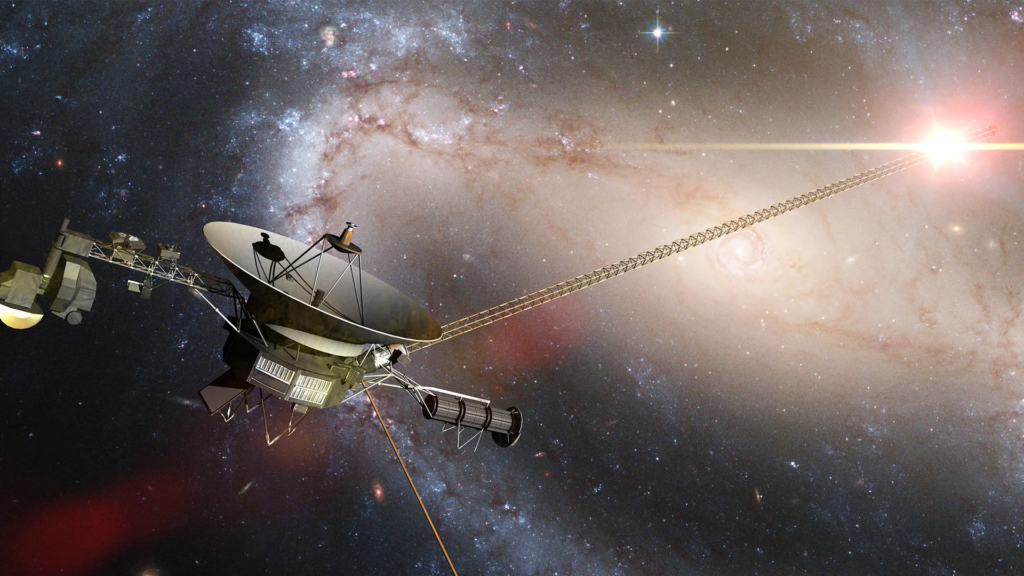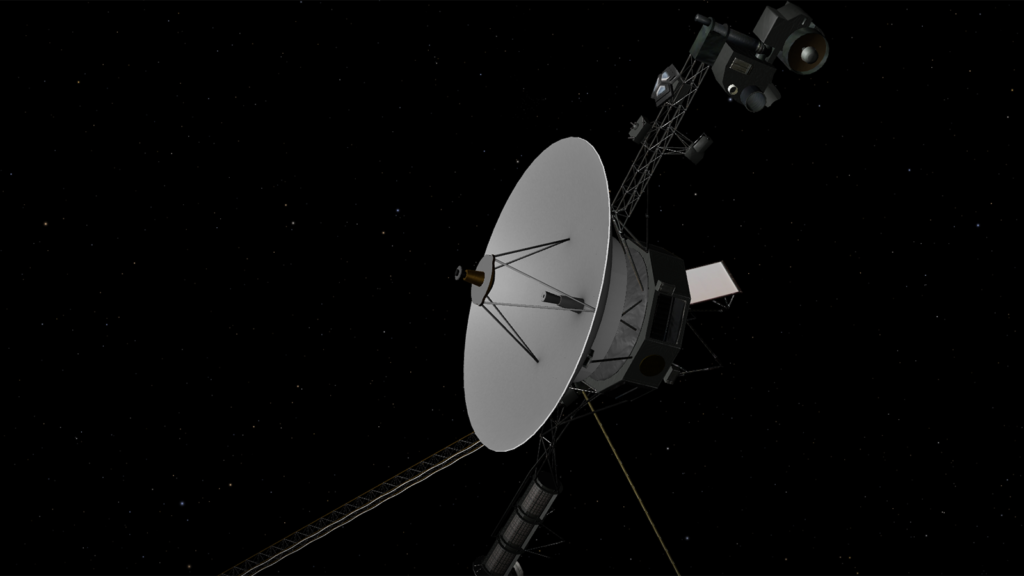After nearly half a century in space, NASA’s Voyager 1 spacecraft has once again overcome communication challenges, reconnecting with its mission team on Earth using a secondary radio transmitter last used in the early 1980s.
This recent communication pause led to a brief but intense period for the flight team, who worked tirelessly to restore the link with the spacecraft, which is now over 15 billion miles from Earth.
Voyager 1’s resilience and the team’s ingenuity in troubleshooting underscore the ongoing value and complexity of the mission, which has provided an unprecedented look at interstellar space. The recent challenges highlight both the technical brilliance behind this mission and the challenges of operating such a distant spacecraft for over 47 years.
Understanding the Communication Pause: Fault Protection System Activation
Voyager 1’s communication difficulties began on October 16, when the mission team attempted to send a command to the spacecraft to turn on one of its heaters.
While the spacecraft was expected to have ample power to perform the task, this command inadvertently triggered Voyager’s fault protection system, an autonomous onboard function designed to protect the spacecraft by turning off non-essential systems in the event of potential issues, such as power overdrawing.
Read : NASA Astronaut Hospitalized After Return from Space Station
Voyager’s fault protection system responds to various onboard conditions, typically conserving power if the spacecraft’s systems detect abnormalities. With no immediate response from Voyager, the team at NASA’s Jet Propulsion Laboratory (JPL) in Southern California waited for data from Voyager 1 to understand what had gone wrong.
As Voyager 1 operates at an astounding 24 billion kilometers from Earth, each command and data return takes nearly two days—23 hours each way—to travel the distance. The team later discovered that Voyager had received the command, but due to the fault protection activation, the spacecraft’s data transmission frequency had changed to conserve power, complicating efforts to locate its signal.
A Return to 1981 Technology: The S-Band Transmitter
After initial efforts to locate the spacecraft’s signal on the X-band frequency proved challenging, the flight team hypothesized that the fault protection system might have activated multiple times, ultimately causing Voyager 1 to switch from its primary X-band transmitter to its older S-band transmitter.
The S-band radio had not been used to communicate with Earth since 1981, posing a unique set of challenges. Not only does this transmitter use a different frequency, but its signal is also far fainter, creating uncertainty about whether the Deep Space Network on Earth would be able to detect it.

When the team’s suspicions proved correct, and they discovered that Voyager 1 had indeed switched to the S-band, it was a remarkable demonstration of both the spacecraft’s resilience and the dedication of the engineers who managed to pick up the faint signal.
The shift to the older transmitter illustrates the constraints of working with such an aged spacecraft, which has traveled far beyond the designed reach of its original communications technology. By October 19, the signal on the S-band was detected, but the team chose not to immediately return to the X-band until they could be sure of what triggered the initial shutdown.
Troubleshooting and the Future of Voyager 1 in Interstellar Space
To avoid further risks to Voyager 1, the mission team decided to prioritize a cautious approach. Instead of reactivating the X-band transmitter without clear understanding of what had triggered the initial fault, they sent a command on October 22 to confirm that the S-band transmitter was functioning reliably.
Now, the team is actively working to gather more diagnostic data from Voyager 1 to pinpoint the exact cause of the fault protection system’s activation and to determine if switching back to the X-band is safe.
Voyager 1 and its twin, Voyager 2, have traveled further into interstellar space than any other human-made objects. However, operating a spacecraft in this environment for over 47 years has come with an increasing frequency of technical issues, many of which pose complex challenges.
With systems and components aging and the spacecraft’s distance making rapid intervention impossible, mission engineers must often devise innovative solutions with limited information and equipment designed in the 1970s.

The Voyager missions continue to yield invaluable insights into the outer reaches of our solar system and the interstellar medium, contributing to our understanding of space beyond the influence of the Sun.
Voyager 1’s latest hurdle emphasizes the mission’s significance and the dedication of the team at JPL, who continuously find ways to sustain contact and operation.
Despite the spacecraft’s advanced age, the team remains committed to extending its mission for as long as possible, ensuring that Voyager’s journey into the unknown continues to yield discoveries. Each challenge overcome by the Voyager team further cements the mission’s place in history as one of NASA’s most remarkable achievements.
let’s enjoy few years on earth with peace and happiness….✍🏼🙏

